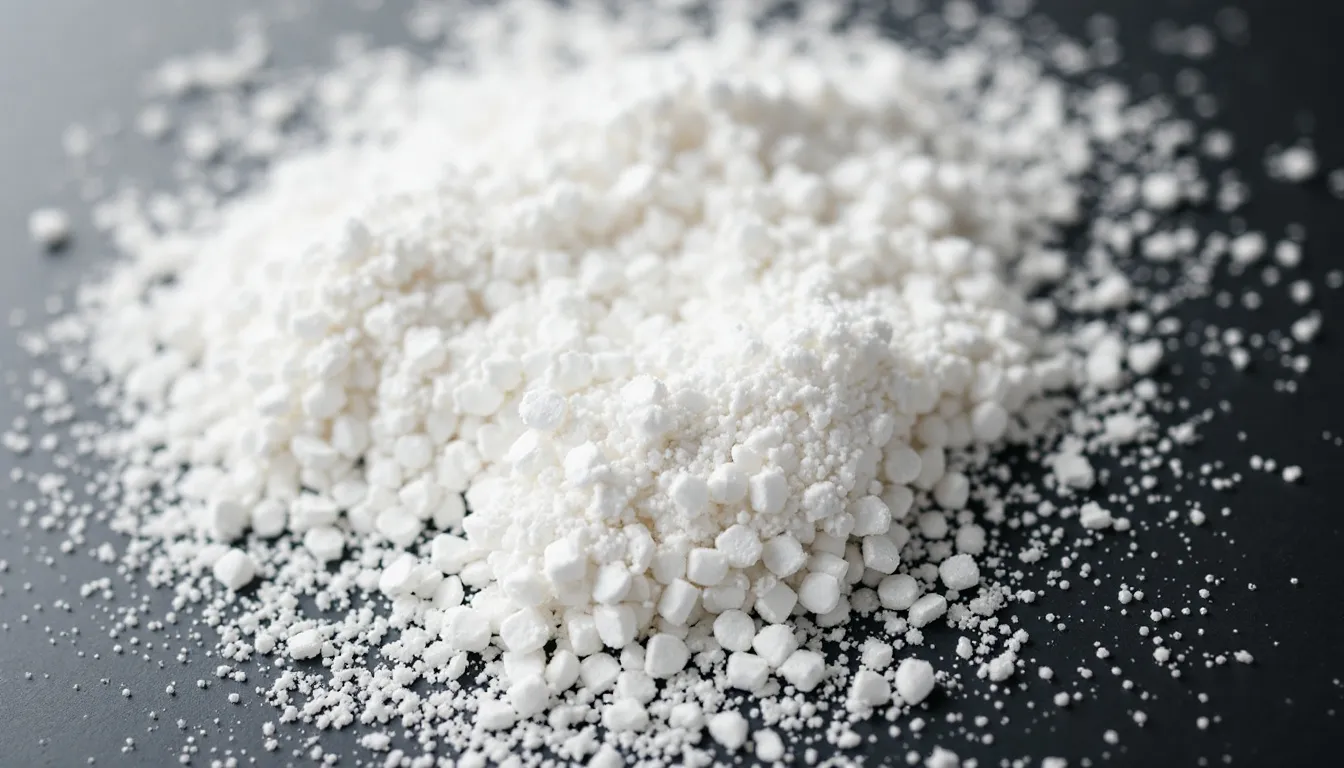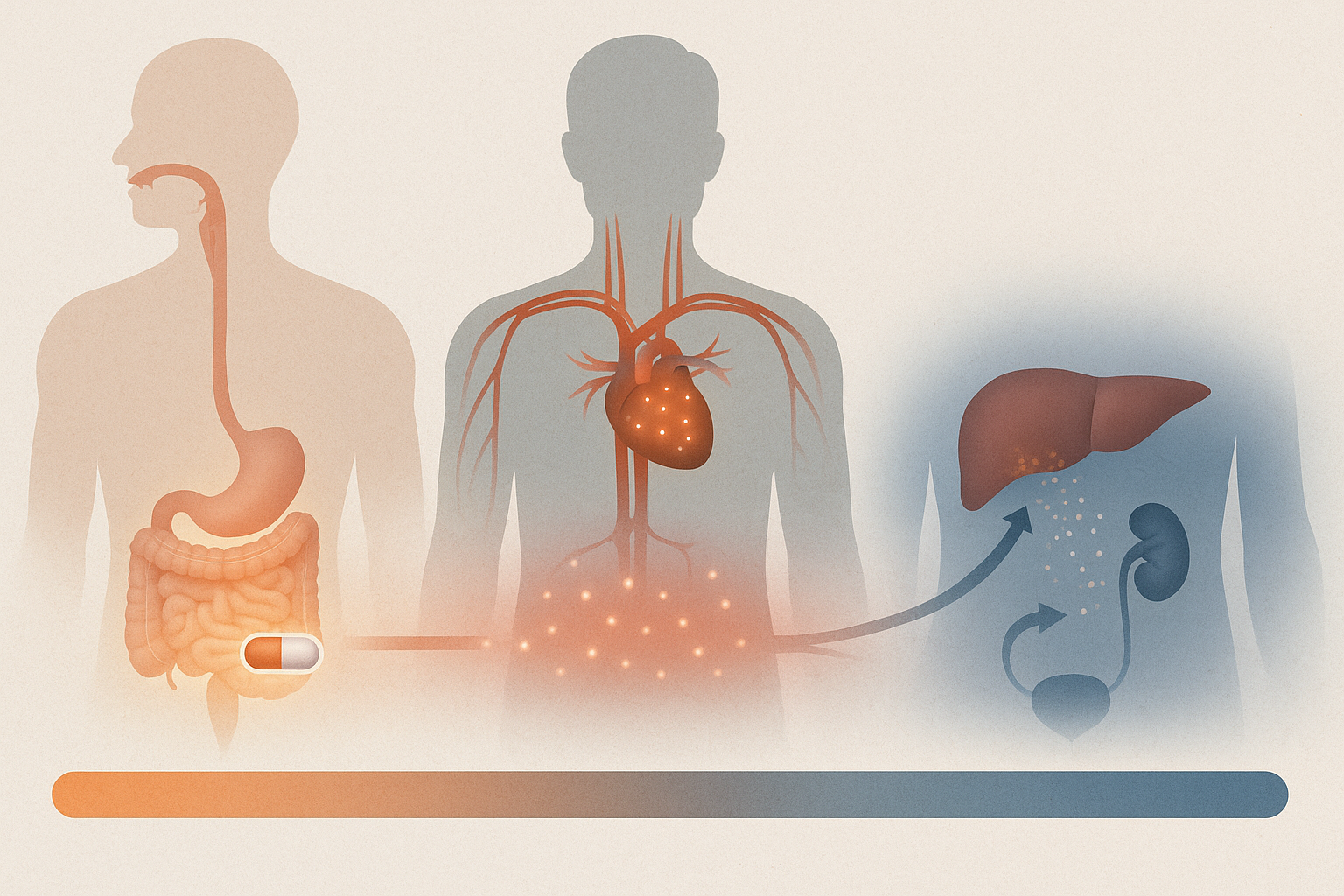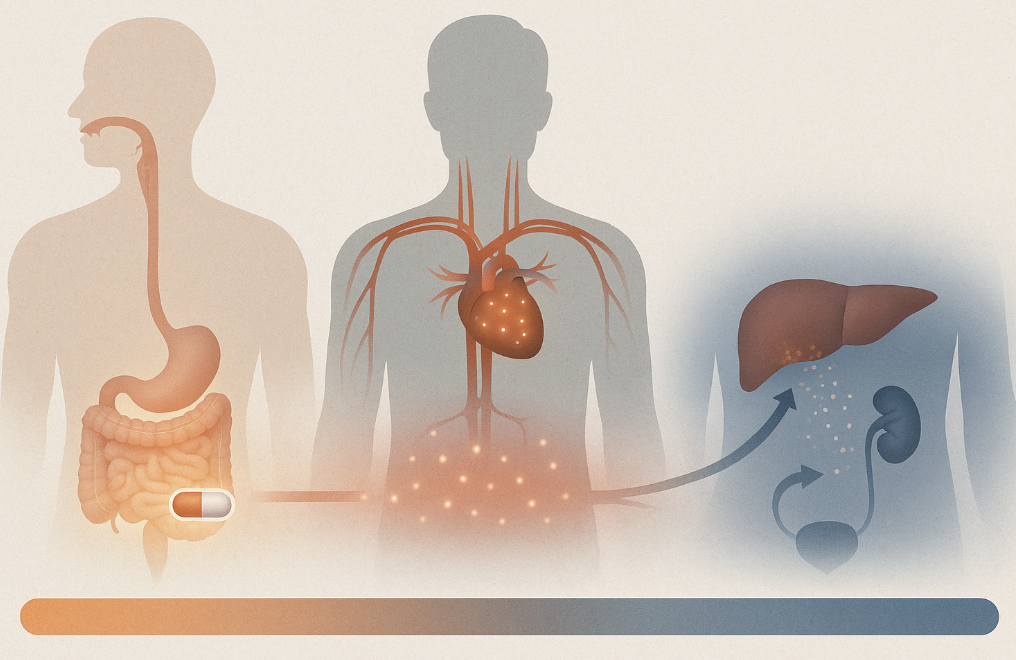Understanding the half-life of Suboxone is essential for anyone undergoing treatment for opioid dependence. The suboxone half-life determines how long Suboxone stays in your system, affects dosing intervals, and helps manage withdrawal symptoms. This article will explain Suboxone’s half-life, how it influences treatment, and what factors can affect its duration in your body.
Key Takeaways
- Buprenorphine in Suboxone has a half-life of 24 to 42 hours, allowing for stable, once-daily dosing, which aids medication adherence and reduces withdrawal symptoms.
- Suboxone can be detected in the system for up to seven days, with various testing methods displaying different detection windows, influenced by metabolism, liver function, and dosage.
- Healthcare providers utilize knowledge of Suboxone’s half-life to tailor treatment plans, manage dosage adjustments, and monitor patient safety, especially when combining with other substances.
What is the half-life of Suboxone?
In pharmacokinetics, “half-life” refers to the time required for a drug’s concentration in the bloodstream to decrease by half. This concept is crucial for Suboxone, a medication for opioid dependency, as it influences dosing frequency and the drug’s elimination half life refers effects over time.
Suboxone is composed of two active ingredients: buprenorphine and naloxone. The half-life of buprenorphine ranges between 24 to 42 hours, while naloxone has a much shorter half-life of about 2 to 12 hours. This variance in half-lives means that buprenorphine remains in the system much longer than naloxone, which is rapidly eliminated.
Understanding these half-lives helps patients and providers manage treatment effectively. The longer half-life of buprenorphine offers several benefits:
- Allows for once-daily dosing
- Aids in medication adherence
- Maintains consistent blood levels
- Reduces withdrawal symptoms and cravings

How long does Suboxone stay in your system?
Suboxone can remain in your system for up to seven days after the last dose. Learn more about how long Suboxone stays in your system, including detection times across urine, blood, saliva, and hair tests. The half-life of buprenorphine ranges from 24 to 42 hours, meaning complete elimination takes about five to seven days.
Different drug tests have varied detection windows for Suboxone:
- Urine tests can detect Suboxone for up to seven days, with peak detection usually occurring between two to four days after use.
- Blood tests are effective for one to two days.
- Saliva tests for suboxone can detect the drug for up to five days.
- Hair tests have the longest detection window, sometimes showing that suboxone can be detected for up to three months. A drug test can be used for drug detection methods that vary significantly among these tests, and they can also be used for drug testing to detect buprenorphine.
Metabolism, age, liver function, and dosage significantly affect how long Suboxone stays in the system:
- Faster metabolism or better liver function can lead to quicker elimination.
- Higher doses or frequent use can extend the duration.
- Health status and hydration levels also influence detectability.

Why is the half-life of Suboxone important?
The half-life of Suboxone supports a single-dose once-daily dosing, simplifying medication regimens and enhancing adherence. For those struggling with opioid addiction, this reduces the burden of frequent dosing.
A longer half-life helps maintain stable blood levels of the drug, reducing the risk of opioid withdrawal symptoms and opioid cravings. This stability is essential for managing opioid dependency effectively, as it minimizes the physiological and psychological impacts of withdrawal and is crucial in addressing opioid use disorder.
Healthcare providers use half-life information to:
- Monitor patients and adjust treatment plans.
- Aid in tapering protocols, allowing for gradual dosage reduction to prevent withdrawal symptoms.
- Inform decisions about potential drug interactions and side effects.
Suboxone half-life vs. other opioids and MAT drugs
Suboxone’s half-life stands out when compared to other opioids and medications used in medication-assisted treatment (MAT). For a deeper comparison, see Suboxone vs Methadone. Short-acting opioids like heroin and oxycodone have half-lives of a few hours, requiring multiple daily doses. In contrast, buprenorphine in Suboxone has a much longer half-life, supporting once-daily dosing.
The table highlights differences in half-lives among various drugs. Suboxone’s longer half-life provides a more stable treatment option, reducing dosing frequency and enhancing adherence. This stability is crucial during detox and transition phases, lowering the risk of overdose and relapse.
Factors that influence Suboxone's half-life
Several factors influence Suboxone’s half-life, including metabolic rate, liver function, and other factors. The enzyme CYP3A4 in the liver metabolizes buprenorphine, and factors influencing variations in this enzyme’s activity can affect how quickly Suboxone is processed.
Age, body weight, hydration, and overall health also impact how long Suboxone stays in the system. Older adults or those with compromised liver function may experience a longer half-life. Higher body fat content can lead to prolonged drug storage in fatty tissues, extending its presence in the body.
Interactions with other medications or substances, such as benzodiazepines or alcohol, can affect Suboxone’s half-life. These substances can either speed up or slow down buprenorphine metabolism, leading to variations in its elimination.
How the half-life affects dosing and withdrawal
Buprenorphine’s long half-life in Suboxone, ranging from 25 to 70 hours, significantly influences dosing and withdrawal management. Suboxone’s extended duration suboxone supports once-daily dosing, preventing cravings and withdrawal symptoms, and providing a stable therapeutic effect for opioid addiction recovery.
Tapering off Suboxone should be gradual, as sudden discontinuation can lead to withdrawal symptoms lasting up to a month. A medically guided Suboxone detox process is often recommended to ensure safe and effective recovery.
Dosage adjustments may be necessary based on individual responses to Suboxone. Healthcare providers use half-life information to fine-tune treatment plans, ensuring patients maintain comfort and minimize withdrawal effects during recovery.
Clinical recommendations for patients and providers
Starting, adjusting, and stopping taking suboxone use should be done under medical supervision. Initial suboxone dose is typically based on the severity of opioid dependency and individual health assessments. Providers may need to adjust dosages to achieve optimal therapeutic effects without significant side effects.
Switching between prescription medication-assisted treatment options, such as from Suboxone to Sublocade, requires careful planning. Understanding each medication’s half-life helps create a smooth transition, minimizing withdrawal risks and ensuring continued support in the recovery journey.
Safety planning is essential when Suboxone is used with other substances, including central nervous system depressants. Buprenorphine’s extended half-life means interactions with substances like alcohol dependence or benzodiazepines can have prolonged effects, necessitating close monitoring and precautions.
Bottom Line: What you should remember about Suboxone half-life
Understanding Suboxone’s half-life ensures its safe and effective use in treating opioid addiction. Buprenorphine takes about nine days to clear from the body, while naloxone typically exits in three days. This knowledge helps plan dosages, manage withdrawal symptoms, and prevent misuse, especially in individuals at risk of Suboxone addiction.
Consulting a certified addiction specialist is essential before making any changes to your Suboxone regimen. They can provide personalized advice based on your specific health needs and ensure your addiction treatment plan is a safe and effective treatment in addressing suboxone addiction to treat opioid addiction.
FAQs about Suboxone half-life
How long does Suboxone stay in your system?
Suboxone can stay in your system for up to seven days after the last dose, influenced by factors such as metabolism, age, and dosage.
How is Suboxone detected in drug tests?
Suboxone is typically detected in urine for up to seven days, in blood for one to two days, in saliva for up to five days, and in hair for up to three months. Therefore, the detection window varies depending on the type of drug test administered.
Why is the half-life of Suboxone important?
The half-life of Suboxone is crucial as it facilitates once-daily dosing, ensures stable drug levels, and minimizes the risk of withdrawal symptoms and cravings.
What factors influence the half-life of Suboxone?
The half-life of Suboxone is primarily influenced by metabolic rate, liver function, age, body weight, and potential interactions with other substances. These factors can significantly alter the duration Suboxone remains active in the body.
How does the half-life of Suboxone compare to other opioids?
Suboxone exhibits a significantly longer half-life than short-acting opioids such as heroin and oxycodone, enabling less frequent dosing and promoting more stable treatment outcomes. This characteristic makes it a preferable option for managing opioid dependence.
















